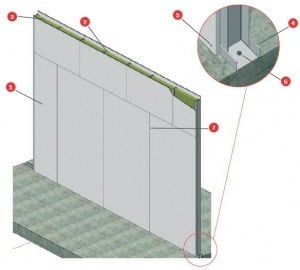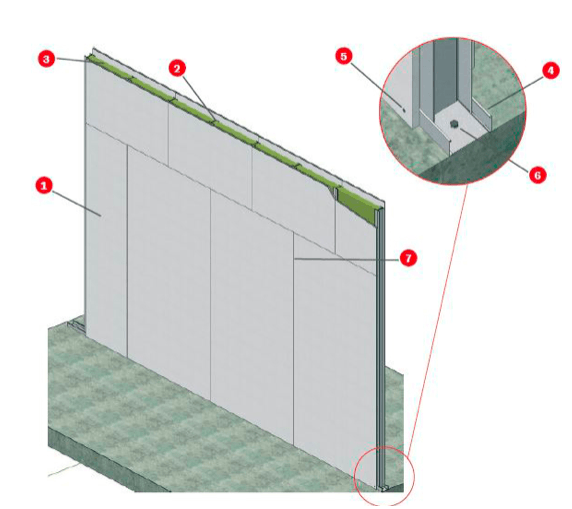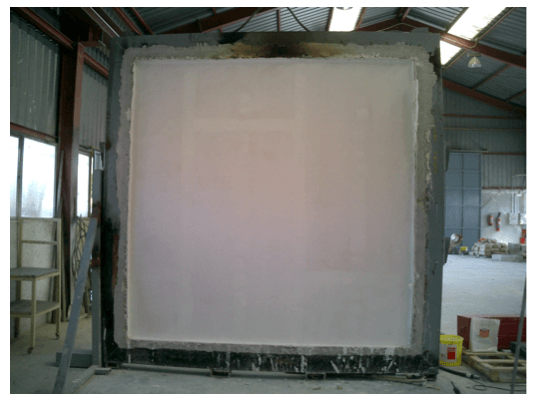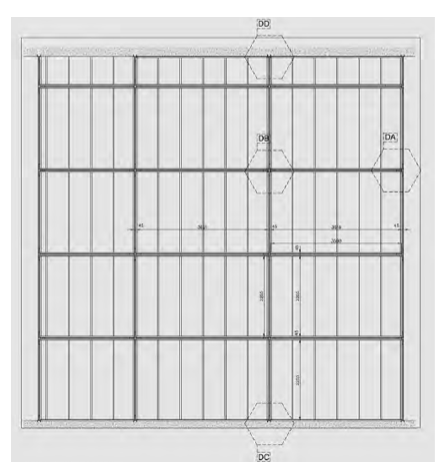
EI-120 Fire Proof Partition Wall with Tecbor® Panel
Actualizado a fecha: 7 February, 2019
In this article we are going to talk about another of our most frequently used solutions, which is our Tecbor EI-120 fire proof partition wall.
The main advantages of this system are its lightness and slenderness when the product is assembled, since it is 97 mm thick, which means it does not reach 10 cm, and it has just 12 mm of Tecbor plate on each side, channel and posts of 70, and 70 mm thick and 100 Kg / m3 density Rock Wool Blanket which allows us to reduce the space in the partition without diminishing any of the benefits that this type of self-supporting divisions have, and we already know how important is to save square meters in many projects.
Other company’s solution have to add several Fire Type plates of different thicknesses, resulting in a much thicker and heavier partition, with the consequent cost overrun in labor and the time it takes to place several plates on each side of the partition.
The test standard that regulates this type of divisions is the UNE EN 1364-1: Fire resistance tests of non-bearing elements. Part 1: Walls. Due to the type of test furnace in Spain, it is usually done a test for dimensions 3×3 m. As shown in the photo of a Tecbor partition ready to rehearse.
For the application of the on-site test to be valid in widths of greater length than 3 m, a test should be done for one of the sides without anchoring the walls of the oven (only sealed with Tecbor Paste), which is usually called a Free Edge. But the norm is very clear when talks about being able to increase its height in work: it just will be able to be increased from those 3 m tested until the 4 m (maximum height).
What if I have a work in which I have to do an EI-120 division of more than 4 m in height? From the Mercor Tecresa R + D + i department we have been answering this type of solution for years. The septum assembly scheme is similar, it just change the auxiliary steel tube structure inside, which it will allow us to, on the one hand absorbing the rising in the partition weight, and on the other hand, the overpressure in case of fire, which will be increased in the upper part of the partition as the height of the partition increases, which according to the standard standard test it will be around the atmosphere for each meter of height. Here we show you an example of an auxiliary structure for a partition up to 8 m high, even if it is possible to certify higher heights.


